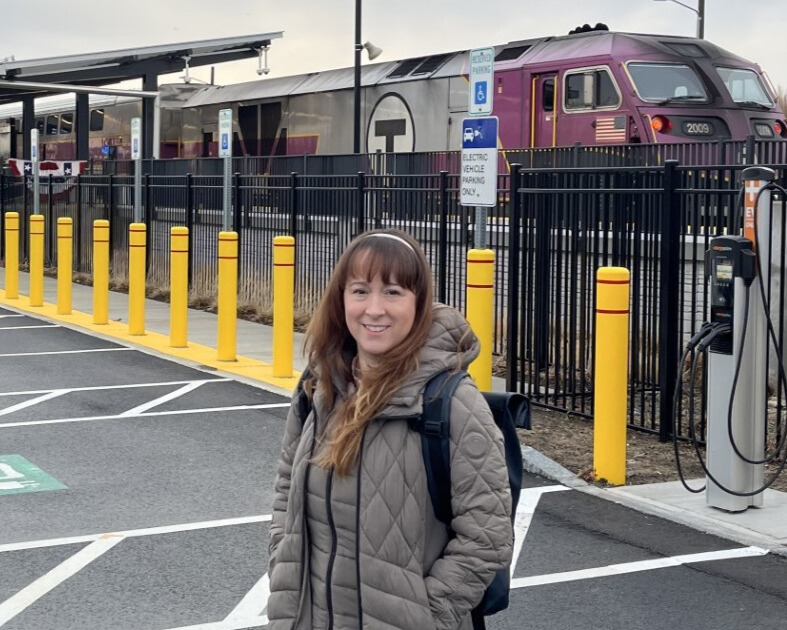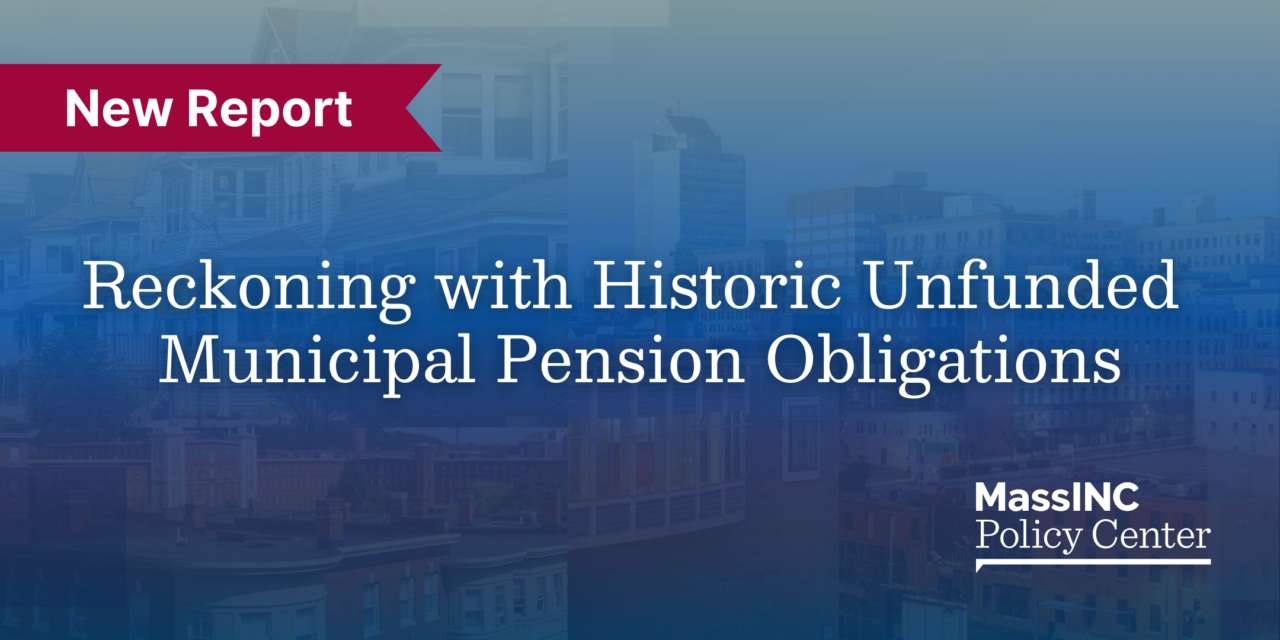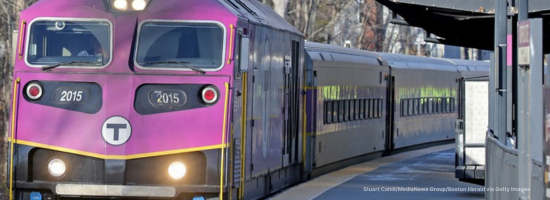“I’ll believe it when I see it.” That was the common reaction from longtime South Coast residents whenever the long-promised train service was brought up. Even as construction progressed, many remained skeptical, having seen too many false starts derail South Coast Rail over the years. Yet today, as a fourth-generation Greater New Bedford resident, I had the privilege of riding the train that many once dismissed as a pipe dream—a testament to the decades-long political determination that made it a reality. For Gateway Cities like New Bedford, Fall River, and Taunton, the arrival of the train proves that bold ambitions can be realized. The key is persistence and a shared vision.

I am one of the train riders who give the “commuter rail” its moniker. I took my first job in Boston as hybrid work became the norm in the post-pandemic economy, offering the promise of improved work-life balance with two to three days a week working from home. Taking the train to Boston adds to that balance—not because it’s faster, but because it transforms travel time into productive time. The moment I open my laptop at one of the few tables on the train, my workday begins. I’d much rather make progress on a research project than face the stress and risk of driving.
Now that the train is running, I notice that people on the South Coast don’t just talk about commuting; they talk about how much easier it is to visit cultural attractions without the hassle of driving. I commend the MBTA for offering late-night service—trains run until around midnight—making it possible to enjoy a show in Boston and still sleep in your own bed at night. I also better understand why New Bedford’s mayor insists on calling it “intercity rail” rather than “commuter rail.” This service isn’t just for commuters. For example, our friends north of here now have train access to the Port of New Bedford, where ferries to Martha’s Vineyard, Cuttyhunk, and Nantucket depart (to say nothing of the many excellent things to do in New Bedford’s downtown).
On my first trip out of the New Bedford station, I had the honor of sitting across from Tracy Barbosa. Tracy is a glass artist who was selected by the city to design and oversee the creation of a glass enclosure for the station’s pedestrian bridge elevator—a piece entitled Equinox. (She also happens to be the TDI Fellow for Attleboro.) As a student, Tracy focused on the role of public art in transit spaces, and she spoke about what she calls the “peripheral effect”—the way beautiful spaces shape our mentality, making us feel safer and valued. However, incorporating public art into the New Bedford station was no small feat. Though it was partially funded by the city, the MBTA would have preferred to cut it from the scope of work. It took the city’s unwavering commitment to ensure that the artwork remained part of the plan.
Now that the train is here, we can’t lose sight of the bigger picture: the current service was always meant as a temporary solution until the shorter, more direct route through Stoughton is completed. I worry that ridership numbers may determine whether Phase 2 moves forward, when the very factors that make the Phase 1 Middleborough route less desirable could suppress those numbers. I also worry about how long, expensive, and complicated construction projects are in Massachusetts. Our state has a tangled web of regulations, most of which were created to prevent past mistakes, but in many cases may have gone too far. It’s tedious work to identify the pain points and addressing them requires finding a delicate balance. I feel proud to say that the Gateway Cities Innovation Institute at MassINC is making progress at this by convening leaders to help find common ground. Working together, we can find ways to maximize the benefits of public investment. The train’s arrival is a milestone—but it’s also a reminder that there’s far more work to do. I hope that you will join us.

The MassINC Policy Center is proud to present Reckoning with Historic Unfunded Municipal Pension Obligations. This new report takes a fresh look at the ongoing challenges surrounding local public pension systems in Massachusetts—and the impact on our communities, particularly Gateway Cities.
For decades, Massachusetts taxpayers have shouldered the financial burden created by past generations who promised public pension benefits without setting aside the funds necessary to cover their costs. This underfunding has led to significant, lingering liabilities that continue to strain local budgets and disproportionately impact lower-income communities. The authors unpack these historical decisions, providing context and data to show that modern local pension benefits are fully affordable—when funds are properly managed and invested responsibly.
We invite you to explore the full report to better understand these challenges and the steps that Massachusetts can take to create a more sustainable, efficient, and equitable path forward for its local pension systems.
Attend the Reclaiming Vacant Property Conference in Springfield on April 8

We’re excited to invite you to the Reclaiming Vacant Properties Conference on Tuesday, April 8, 2025, at the MassMutual Center in Springfield, MA. This gathering will bring together community leaders, policymakers, and practitioners to share ideas and strategies for transforming vacant properties into vibrant spaces to answer housing needs in Massachusetts.
This conference serves as a starting point for cities and towns to gain the knowledge and resources they need to tackle vacant properties in their communities. Whether you’re facing challenges related to code violations or tax title issues, this event will outline practical solutions and highlight recent legal updates and tools, such as amendments to Massachusetts laws related to receivership and tax title foreclosure.
This year’s conference is presented in partnership with the MassMutual Foundation and co-sponsored by the Massachusetts Association of Community Development Corporations (MACDC) and Citizens’ Housing and Planning Association (CHAPA), MassHousing, and Massachusetts Housing Partnership (MHP).
Gateway City News
HOUSING & ECONOMIC DEVELOPMENT
- Holyoke will ask for voluntary payments from tax-exempt groups.
- Sec. Augustus joins The Codcast to discuss the relationship between cities and the state, and meeting our ambitious housing goals in the current climate.
- CEDAC awards funds to early-stage affordable housing projects in Lawrence and Salem.
- MassHousing makes grants for the preservation of affordable sober housing, including funds for EMH Recovery in Brockton.
- The Congress for New Urbanism writes about the potential of places like New Bedford.
- The Brookings Institution shows the path to public safety follows economic opportunity.
CLIMATE
- The Massachusetts Clean Energy Center is changing up plans to create a renewable energy research and development center in New Bedford, and instead aims to work with existing companies with a focus on alternative energy technology.
- A Massachusetts-based company launches program to fund community solar projects. Worcester Community Energy Action will be one of the first beneficiaries.
TRANSPORTATION
- The first week of South Coast Rail service will be fare-free.
- Opinion: South Coast Rail is great. It is also 30 years late.
- Columnist Jack Spillane joins a New Bedford couple on one of the first trips of the new commuter rail line running between Boston and the Whaling City.
- Hundreds of millions of dollars in federal funding Massachusetts secured for its West-East Rail plan might be imperiled by shifting federal priorities.
EDUCATION
- The Healey-Driscoll administration awards funds for broadband in public housing to Holyoke and other Gateway Cities.
- Lawrence schools to lose $14 million in federal funding.
- Quincy schools affected by homelessness.
- Worcester Polytechnic Institute places 18th best in the country in the US News and World Report ranking of return on investment from higher education.
- The debate over admissions policies at the state’s vocational high schools seems to be nearing an end.
- Ben Forman writes about the economic benefits of ESOL for the latest issue of MassBenchmarks.
COMMUNITIES & PEOPLE
- Rick Sullivan, longtime Gateway City leader and committed partner, announces his retirement from the Western Massachusetts Economic Development Council at the end of the year.
